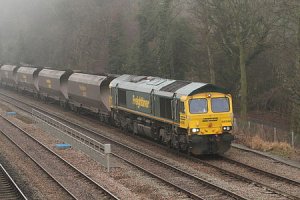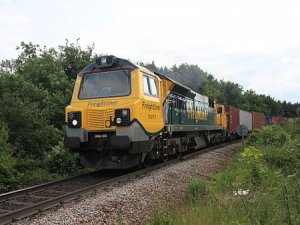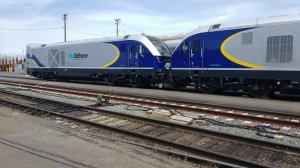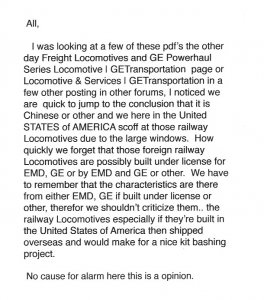You are using an out of date browser. It may not display this or other websites correctly.
You should upgrade or use an alternative browser.
You should upgrade or use an alternative browser.
Critical of Foreign Rail Locomotives
- Thread starter BCK RR
- Start date
Not sure what the purpose of the thread is here, but many countries have used EMD and GE locomotives, sometimes as in western Australia's mining region, basically as built, US models with maybe minor mods, or in the case of state railways, with superstructures built to local design requirements. These are and have been built either "in house" after importation, or built in the US to those requirements.
New Zealand's relationship with US locomotives began back in the 1870's when the Govt decided that the types and styles were more suitable to the terrain they would contend with. They also had to have light axle loadings because of the track and many bridges. They first chose a Baldwin design, but because of the British colonial connection, had them built in Britain to a strict weight requirement. The Pom's (Australasian term for the English, also Pommies for even greater derrogatory emphasis) must've thought, "We'll show these yanks how to build steam engines" and when the first shipment arrived they were 10 ton heavier than the max. They got sent back. As urgency was now needed, 2 Rogers 2-4-2's were sourced and shipped from America, They were received with some disdain because of their flashily painted, polished brass banded boilers and varnished cabs, but the conservative Kiwis were soon won over by their performance and suitability. More followed. 2 have been restored and rebuilt (rescued from where they were dumped in 1927 into riverbanks) and now serve on tourist lines. Don't know what happened to the Baldwins.
Here's Rogers K88 operating on the short 2 mile Plains Railway.
https://www.youtube.com/watch?v=X08qFApAJLw
https://www.youtube.com/watch?v=X08qFApAJLw
autocoach
Active Member
British railroad operators have experimented with US/Canadian built diesels over the last 20 years. These were primarily heavy freight (it's no longer called "goods") locomotives intended for heavy traffic. You can recognize the GE and EMD origin below the cowling and in the trucks.

EMD Class 66

GE Class 70
British practice is not to MU multiple locomotives as their rail network infrastructure does not support very long trains. The infrastructure also requires they be double ended. Also the cowl type of external structure was originally required for the EMD units as the layout of the internal components has to be spread full width to fit in a very restrictive loading gauge. Yellow high viz ends are required but as grade crossings are almost non-existent less collision protection is required for the "engine driver".

EMD Class 66

GE Class 70
British practice is not to MU multiple locomotives as their rail network infrastructure does not support very long trains. The infrastructure also requires they be double ended. Also the cowl type of external structure was originally required for the EMD units as the layout of the internal components has to be spread full width to fit in a very restrictive loading gauge. Yellow high viz ends are required but as grade crossings are almost non-existent less collision protection is required for the "engine driver".
autocoach
Active Member
Ownership and use of most trackage in the US by freight railroads and heavy use for freight services places as speed restriction of 80 MPH on Amtrak except in the North East corridor where Amtrak owns the right of way. The railroads will only maintain track to the speed level they need. Also those $#%@ grade crossings make rebuilding too costly to improve speed.
autocoach
Active Member
US built to a more "international design" , the Siemans AC 44. Oakland Amtrak yard 4-25-2017. Siemens has located it's US manufacturing facility outside of Sacramento California. This design with variations has been ordered by a number of US state regional railroad operators and Amtrak.


We may see a model in the near future. Those side grills will be great for sound speakers.
ken


We may see a model in the near future. Those side grills will be great for sound speakers.
ken


